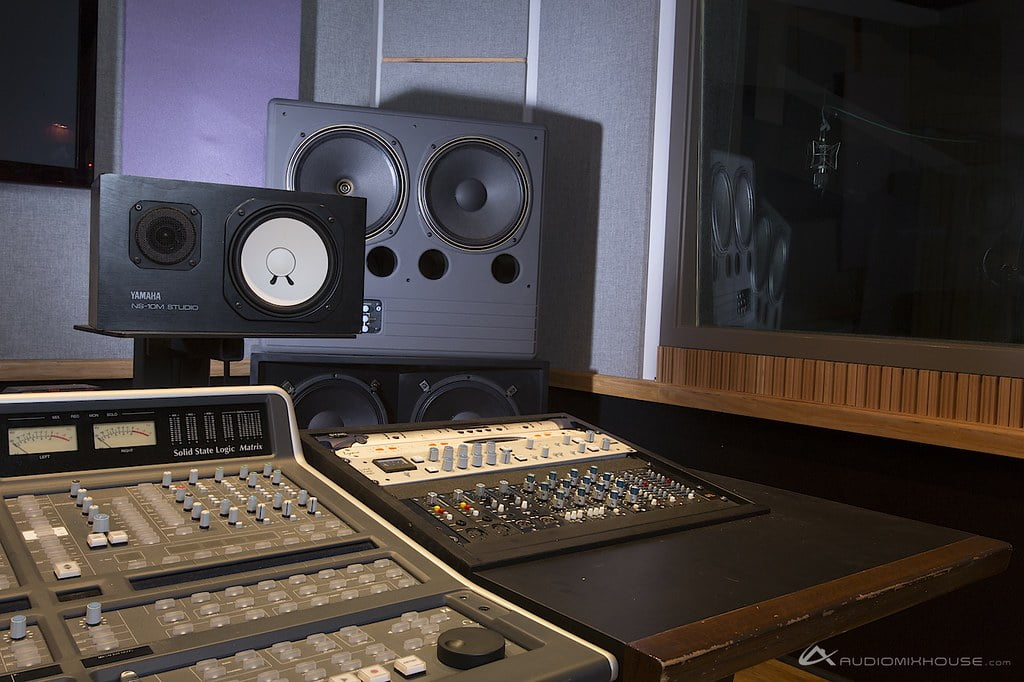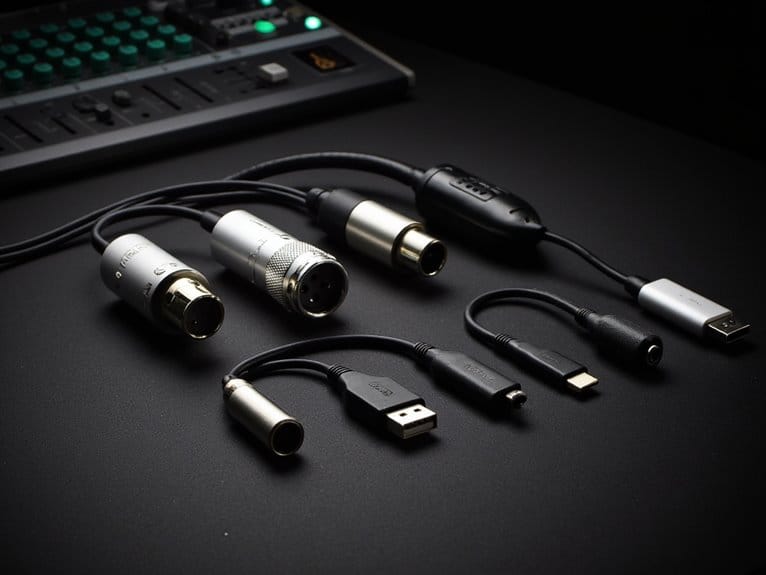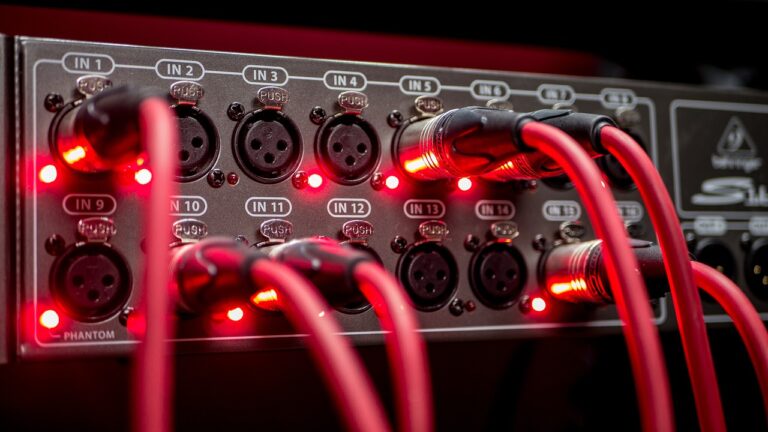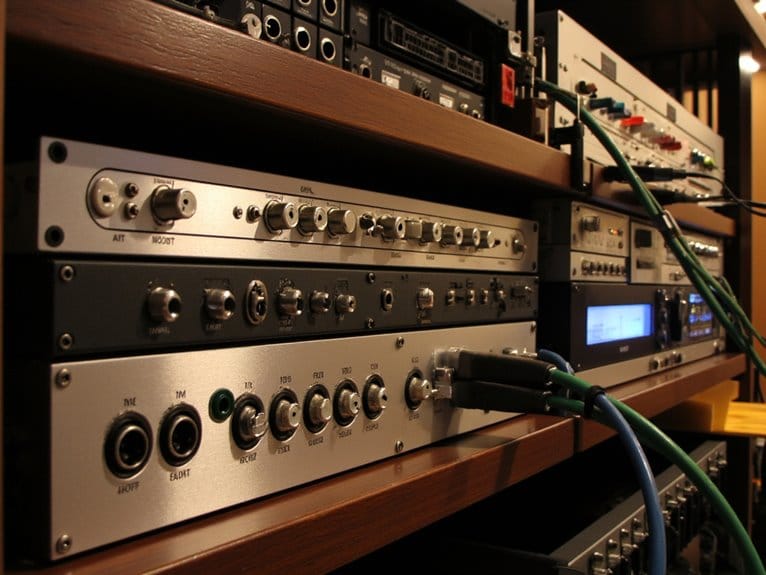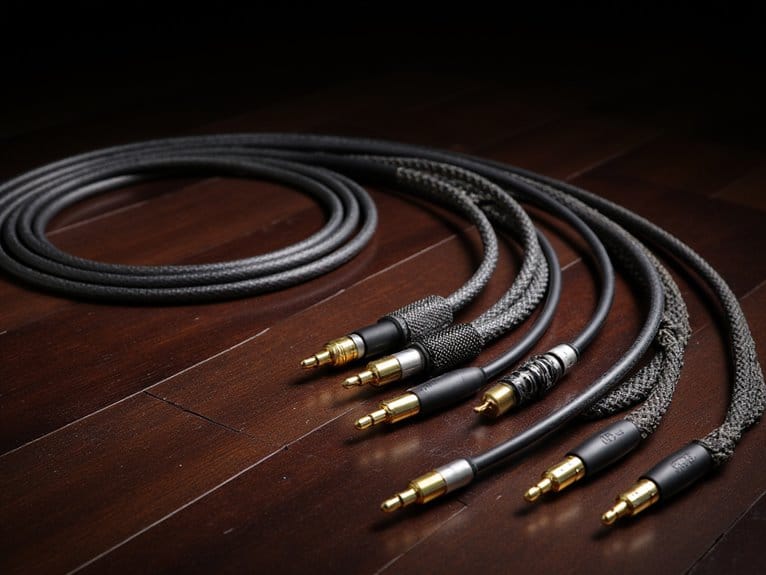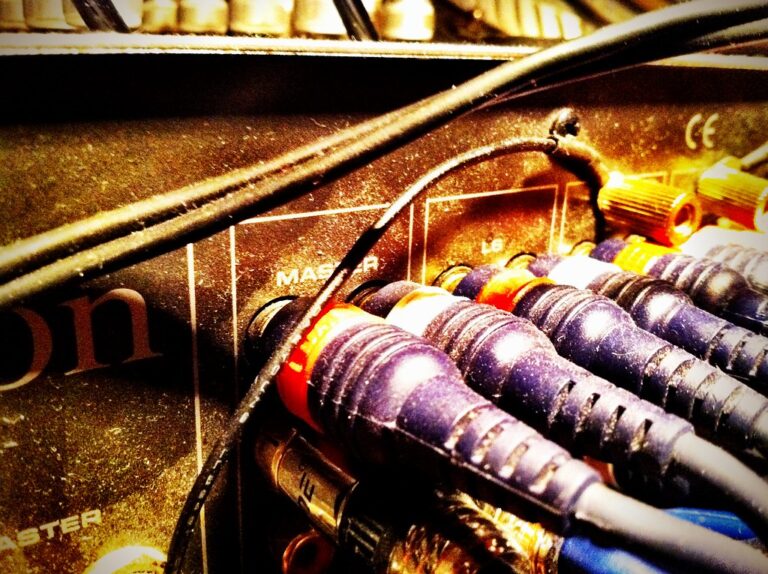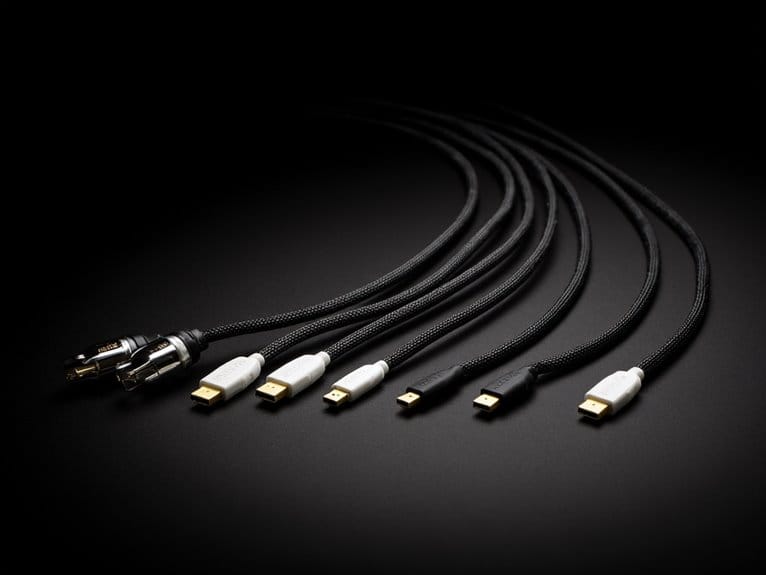Speaker Cable Selection: Matching Cables to Your Studio Monitors
The importance of selecting the right cable for your setup can greatly impact the sound quality you experience. But how do you navigate the sea of choices and make the perfect match? Let’s explore the intricacies of speaker cable selection and uncover the secrets to maximizing your studio monitor performance with the right cables.
We are supported by our audience. When you purchase through links on our site, we may earn an affiliate commission, at no extra cost for you. Learn more.
Importance of Proper Speaker Cable Selection
Selecting the right speaker cables is a vital aspect of maintaining prime signal quality and performance in studio monitors. When it comes to transmitting audio signals from your amplifier to your speakers, the speaker cable plays an essential role in guaranteeing excellent signal integrity. The quality of the cable directly impacts the efficiency of power delivery to your studio monitors, which is essential for achieving the best possible sound reproduction.
Using high-quality speaker cables is imperative as they help minimize interference and noise, resulting in cleaner and more accurate audio output. Poor-quality cables can introduce unwanted distortions and colorations to the sound, compromising the overall listening experience. By investing in well-built speaker cables, you can effectively prevent signal loss and make sure that your studio monitors receive the full range of frequencies without any degradation.
Another key factor to take into account when selecting speaker cables is matching the impedance of the cables to that of your studio monitors. Mismatched impedance can lead to reflections and distortions in the signal, potentially causing damage to your equipment. By choosing cables with the correct impedance, you can safeguard your studio monitors and maintain their longevity while preserving the integrity of the audio signal. Ultimately, the right speaker cables contribute significantly to the overall performance of your studio setup, making them a worthwhile investment in enhancing your audio experience.
Factors to Consider When Choosing Cables
Considering the length of your cable runs is pivotal in determining the appropriate wire gauge for best performance when selecting speaker cables for your studio monitors. Thicker gauges, such as 14 AWG, are recommended for longer runs exceeding 100 feet to minimize signal loss. Copper wire, known for its high conductivity, is the preferred material for speaker cables to make efficient signal transmission. Opting for shielded cables is critical as they help in reducing electromagnetic interference, maintaining audio quality.
When choosing speaker cables, the length of cable runs plays a significant role in determining the wire gauge needed. Longer distances require thicker gauges to prevent signal degradation and assure top performance. Stranded wire, commonly used in speaker cables, offers flexibility and ease of installation, making it a practical choice for connecting your studio monitor stands to your audio source.
Matching Cables to Monitor Specifications
To guarantee peak performance of your studio monitors, it is crucial to match the gauge of your speaker cables with the power handling capacity of the monitors. When selecting speaker cables for your studio setup, consider the following:
- Distance Consideration: Take into account the distance between your audio interface or amplifier and the studio monitors when choosing the appropriate cable length.
- Connector Compatibility: Make sure that the connectors on the speaker cables align with the input/output jacks on your studio monitors for a secure and reliable connection.
- Construction and Material: Pay attention to the construction and material of the speaker cables to guarantee durability and maintain signal integrity over time.
- Manufacturer Specifications: Consult the specifications provided by the manufacturer of your studio monitors to determine the recommended type and gauge of speaker cables for the best compatibility.
- Signal Integrity: Keep in mind that using the right gauge and type of speaker cables according to the monitor specifications will help maintain signal integrity and overall audio quality in your studio setup.
Tips for Optimal Cable Performance
For ultimate cable performance, prioritize utilizing high-quality oxygen-free copper wire to minimize signal degradation. The choice of speaker wire is vital in a studio setup, as it directly impacts the sound quality. When selecting speaker wire, consider the American Wire Gauge (AWG) that matches the distance between your amplifier and studio monitors. This guarantees efficient power delivery without loss or distortion.
In a home studio environment, bi-wiring or bi-amping setups can be beneficial for enhancing sound quality and speaker control. Specific speaker cables designed for bi-wiring configurations can optimize the audio experience. Additionally, to maintain signal integrity, it is essential to keep speaker cables away from power cables to avoid electromagnetic interference that can introduce unwanted noise into the sound.
When connecting your studio monitors to the amplifier, using banana plugs or spade connectors is recommended for secure and reliable connections. These connectors not only provide a stable link between the components but also make it easier to swap or upgrade cables in the future. By following these tips and paying attention to the quality and setup of your speaker wire, you can ensure peak cable performance and achieve the best sound possible in your studio.
Common Mistakes to Avoid
Mistakes in speaker cable selection and setup can greatly impact the performance of your studio monitors. To guarantee optimal audio fidelity and prevent issues such as signal degradation and unwanted noise, it is important to avoid the following common pitfalls:
- Using improperly matched cables: Matching the impedance rating of your speaker cables with that of your studio monitors is vital to prevent potential damage to equipment and ensure a seamless connection.
- Neglecting proper cable length: Avoid using excessively long cables, as this can introduce signal interference and distortion, compromising the quality of audio playback.
- Opting for low-quality cables: Using cheap or low-quality speaker cables may degrade audio fidelity and overall performance, affecting the clarity and accuracy of sound reproduction.
- Ignoring shielding in high EMI environments: In areas with high electromagnetic interference, unshielded speaker cables should be avoided to prevent the introduction of unwanted noise into the audio signal.
- Underestimating cable thickness: Thin speaker cables may not provide adequate conductivity, leading to signal degradation and loss of audio quality. Select cables of appropriate gauge to guarantee optimal performance.

